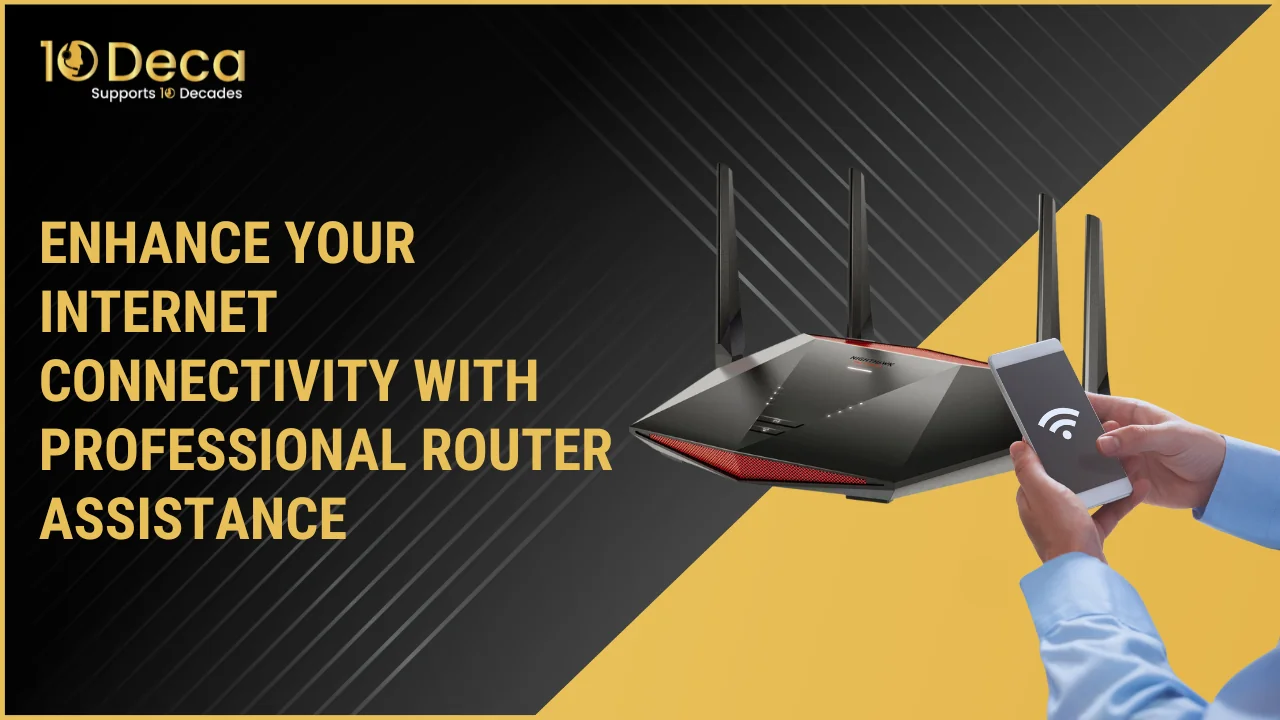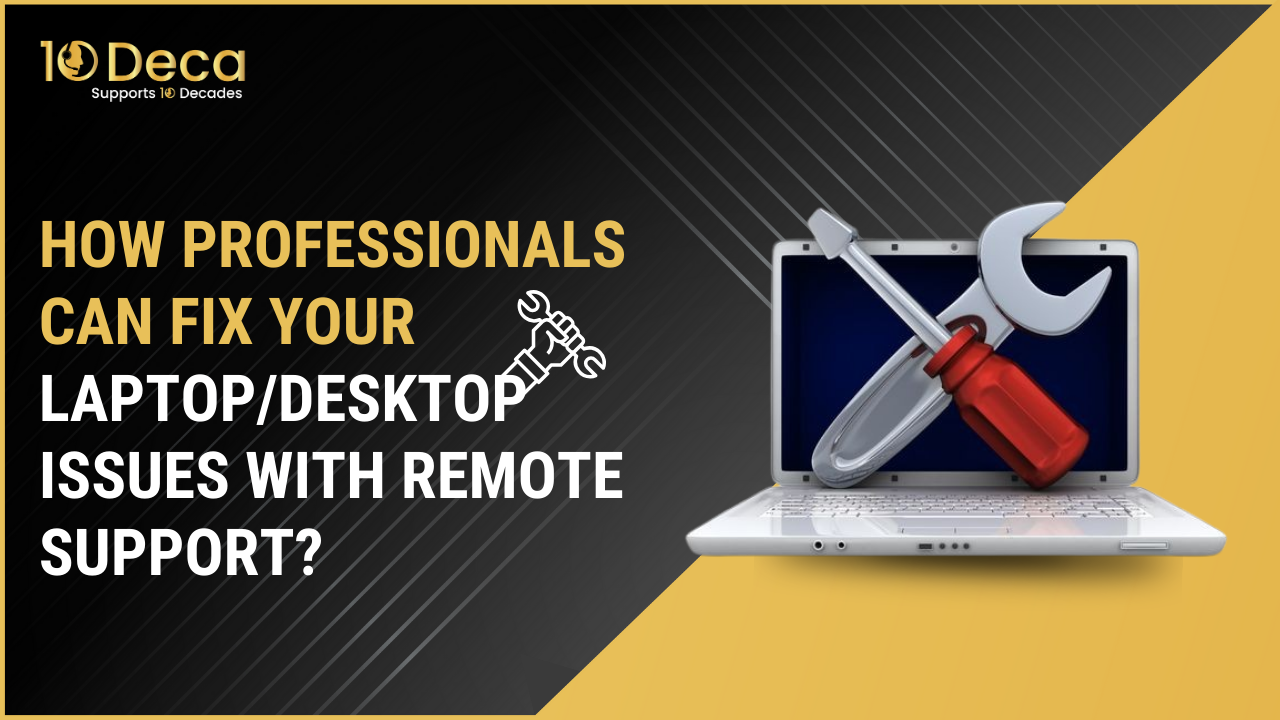Posted on:
Enhance Your Internet Connectivity with Professional Router Assistance

At present, the requirement for reliable and fast internet connectivity is vital for both professional and personal actions. Even with the most advanced technologies available, issues with the internet remain frequent. One of the most important elements that manages the internet in your workplace and at home involves the router. If you're having issues with your internet connectivity, it's a good idea to get help from experts who are well-versed in routers. Not only this, you can also take their help for a perfect wifi router installation.
This article will explore the causes behind internet issues, the best method to solve the issue, and how the customer support team at 10 Deca can aid in this.
Why Internet Connection Errors Happen on Routers
Knowing the causes behind problems with internet connectivity on routers is vital to solving these problems. The router is the primary point for managing the internet traffic in networks, and controlling data transmission between devices as well as the internet. Many factors can lead to issues with connectivity.
1. Hardware Malfunction: Routers like all electronic devices, are susceptible to hardware malfunctions over time. The wear and tear of the device, power surges, or even manufacturing issues can result in the components failing or deteriorating completely. Signs of hardware failure could consist of intermittent problems with connection, drop connections, or the complete discontinuation of internet connection.
2. Software Glitches: Routers depend on software and firmware to function efficiently. Like any other software-driven system, routers may encounter glitches, errors, or faulty firmware that can disrupt normal operation. The outdated firmware, in particular routers, can be vulnerable to security vulnerabilities and performance decline. Connectivity issues related to software can result in intermittent disconnects from the internet or issues accessing certain sites or services.
3. Interference: Wireless routers work at specific frequencies, usually within the 2.4 5 GHz and 2.4 bands. However, the frequency is also shared by various electronic gadgets like cordless phones, microwave ovens, and Bluetooth devices in addition to adjacent Wi-Fi networks. The interference from these sources could cause signal degradation and limit the effectiveness of the router, which can lead to a poor connection, dropped connections, and slower internet connections. Physical barriers such as walls, floors, or appliances can also reduce Wi-Fi signals, which can further exacerbate interference problems.
4. Configuration Problems: Incorrect settings for routers or incorrect configurations could affect internet connectivity and network performance. Common errors in the configuration are making use of an incorrect Subnet Mask, IP Address, and DNS setting, and activating incompatible features that are not compatible with one another. In addition, incorrect location of routers or the antenna's placement can lead to poor coverage of Wi-Fi and weak signal which can cause connectivity issues in specific locations of the office or at home.
In identifying and fixing the underlying causes of connectivity issues Users can take proactive measures to improve the performance of their router and ensure a stable internet connection. It can be done through hardware diagnostics firmware updates, enhancing settings for routers, or eliminating the sources of interference, recognizing the root causes of the connectivity issues of routers is essential to ensure an effective and stable network environment.
How to Fix these Issues
If you encounter internet connectivity issues, customers can use proactive measures to diagnose and fix the issue themselves. This article provides a more in-depth description of suggested DIY troubleshooting procedures:
1. Restart Your Router:
- Sometimes, routers face intermittent glitches that can be fixed simply by rebooting.
- To start your router, disconnect it from power sources and wait for 30 seconds to one minute.
- After the time-out After the time, plug the router in and let it fully boot.
- This procedure, also known by its name power cycling, can typically fix minor issues and bring back internet connectivity.
2. Check Physical Connections:
- Make sure that the cables that link your router with your modem and the other devices are connected.
- Check and examine your Ethernet cables for signs of damage, like bent or fraying connectors.
- Make sure the cables are properly fitted into their ports, to ensure an effective connection.
- Cables that are damaged or broken could hinder the internet connection and may require replacement in case there is a problem.
3. Update Firmware:
- An annual update to the firmware of your router is crucial to spot security flaws and improve performance.
- Visit the official website that is owned by the brand to view the most recent firmware updates for the model of your router.
- Follow these steps to Download and then install firmware updates on your router.
- Firmware updates often include fixes for problems, stability improvement along new features that could enhance the performance of your router.
4. Adjust Router Placement:
- Set your router in the right place in your office or home for the best Wi-Fi coverage and ensure smooth wifi router installation.
- The router must be protected from physical obstacles like walls, furniture, or other devices that might hinder wireless signals.
- Move the router to an elevated location, like on the wall or a shelf for better signal transmission.
- Think about the use of range extenders for Wi-Fi or mesh networks to increase coverage in areas that have weak signals.
5. Reset to Factory Settings:
- If nothing else works If all else fails, resetting your router to default settings will eliminate any software or configuration problems.
- Find that reset switch on the router. Usually, it is located in the bottom or back part of your device.
- Hold on the reset switch for 10-15 seconds with a paperclip or similar tools until the router's lights blink.
- Press the reset button, and let the router restart. Take note that doing this reset button will erase any settings that you have previously set including Wi-Fi network names as well as passwords.
- Once you have reset your router, you can reconfigure your router to use the appropriate settings to create an entirely brand-new connection to the network.
- The steps listed below will often solve common router-related connectivity issues and re-establish Internet connectivity, without the need for expert assistance. If the issue persists despite all your efforts try seeking assistance from your Internet service provider or the router manufacturer's support team.
Customer Support Team
If your DIY attempts at troubleshooting fail or you're not sure of how to do technical tasks, getting help from 10 Deca’s reputable customer support team is recommended.
When you reach out to support customer service, make sure to describe the model of your router, the Internet service providers, as well as the specific issue you're facing. The technician will help you troubleshoot additional procedures to fix your internet connectivity errors effortlessly.
Professional assistance for routers will not only guarantee prompt solutions to connectivity problems but also assure that skilled professionals will handle the issue.
Conclusion
Internet connectivity is vital to modern-day living and issues with routers can hinder productivity and disrupt entertainment. By understanding the most common reasons for connectivity issues and applying DIY troubleshooting procedures or seeking assistance from a professional in the event of need, users can improve their internet connection and enjoy a seamless online experience. Be aware that a reliable internet connection begins with a functioning router.
If you're still facing issues, don't hesitate to reach out to 10 Deca for reliable support and prompt resolution of your problems.



